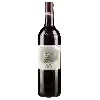
Château Bel-AirLa Cerisée Merlot
In the mouth this red wine is a powerful with a nice balance between acidity and tannins.
This wine generally goes well with poultry, beef or veal.
The La Cerisée Merlot of the Château Bel-Air is in the top 50 of wines of Bordeaux.
Taste structure of the La Cerisée Merlot from the Château Bel-Air
Light | Bold | |
Smooth | Tannic | |
Dry | Sweet | |
Soft | Acidic |
In the mouth the La Cerisée Merlot of Château Bel-Air in the region of Bordeaux is a powerful with a nice balance between acidity and tannins.
Food and wine pairings with La Cerisée Merlot
Pairings that work perfectly with La Cerisée Merlot
Original food and wine pairings with La Cerisée Merlot
The La Cerisée Merlot of Château Bel-Air matches generally quite well with dishes of beef, veal or game (deer, venison) such as recipes of beef bourguignon with tomato, pljeskavica (balkan hamburger) or magret stuffed with foie gras.
Details and technical informations about Château Bel-Air's La Cerisée Merlot.
Discover the grape variety: Merlot
Merlot noir is a grape variety that originated in France (Bordeaux). It produces a variety of grape specially used for wine making. It is rare to find this grape to eat on our tables. This variety of grape is characterized by small to medium sized bunches, and medium sized grapes. Merlot noir can be found in many vineyards: South West, Languedoc & Roussillon, Cognac, Bordeaux, Loire Valley, Armagnac, Burgundy, Jura, Champagne, Rhone Valley, Beaujolais, Provence & Corsica, Savoie & Bugey.
Informations about the Château Bel-Air
The Château Bel-Air is one of of the world's greatest estates. It offers 5 wines for sale in the of Bordeaux to come and discover on site or to buy online.
The wine region of Bordeaux
Bordeaux, in southwestern France, is one of the most famous, prestigious and prolific wine regions in the world. The majority of Bordeaux wines (nearly 90% of the production Volume) are the Dry, medium and Full-bodied red Bordeaux blends for which it is famous. The finest (and most expensive) are the wines of the great châteaux of Haut-Médoc and the right bank appellations of Saint-Émilion and Pomerol. The former focuses (at the highest level) on Cabernet Sauvignon, the latter on Merlot.
The word of the wine: SGN
Selection of noble grains. Appellation reserved for a type of sweet wine produced in Alsace.













